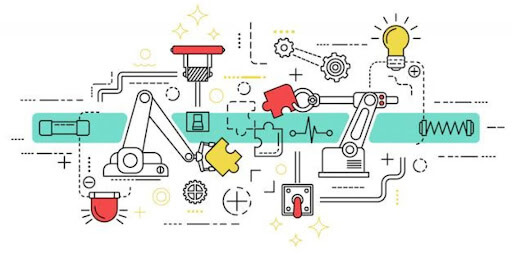 1-800-805-5783
1-800-805-5783 
Product engineering is a dynamic field where innovation and efficiency are core pillars. In the quest to create cutting-edge products and maintain a competitive edge, businesses increasingly turn to cross-functional teams for solutions.
These teams have gained significant prominence in recent years for good reason. They provide a collaborative, agile approach that can transform the product development process. In this blog post, we’ll explore the world of product engineering and unveil the many benefits of cross-functional teams.

Cross-functional teams in product engineering refer to collaborative groups composed of individuals from diverse professional backgrounds and skill sets who work together to design, develop, and optimize products for the market.
To enhance the product engineering process, these teams are specifically structured to integrate expertise and perspectives from various disciplines, including design, engineering, marketing, quality assurance, and project management.
By fostering a cross-disciplinary approach, these teams aim to maximize innovation, efficiency, and overall product quality while ensuring they meet or exceed market demands and customer expectations in product engineering.
Product engineering is a critical phase in developing new products and services. Organizations increasingly turn to cross-functional teams to optimize the process and drive innovation. These teams are composed of individuals with diverse skills and expertise, which yield a range of benefits tailored explicitly to product engineering:
A. Enhanced Product Development
B. Improved Problem Solving
C. Increased Efficiency
Reduced Redundancy: By pooling resources and expertise, cross-functional teams minimize redundancy in tasks and decision-making and eliminate the need for multiple iterations and reviews, saving time and resources.

Effective information sharing and communication are paramount in the field of product engineering. They foster innovation and ensure that teams can work cohesively toward a common goal. In this context, optimizing collaboration and communication can be achieved through several vital strategies essential for product engineering success.
A. Effective Information Sharing
B. Enhanced Decision-Making
Teams must have access to up-to-date data, enabling them to make informed decisions throughout the product development lifecycle. This data-driven approach enhances product quality and helps avoid costly mistakes.
Optimizing communication means ensuring stakeholders come to a common understanding and agreement on product goals, timelines, and specifications. Effective collaboration leads to consensus-building meetings that involve all relevant parties, helping to avoid conflicts and misunderstandings.
A. Early Issue Identification:
Engineers can use tools and methodologies like Failure Mode and Effects Analysis (FMEA) to assess various failure modes, their likelihood, and potential consequences. This proactive approach enables teams to develop mitigation strategies before issues escalate.
B. Compliance and Quality Assurance:
Error Reduction: Error reduction is vital in product engineering, as even minor mistakes can have significant consequences. Implementing quality assurance processes like Six Sigma or Total Quality Management (TQM) can help identify and rectify errors early in development, reduce the risk of product defects, and minimize costly rework and recalls, saving time and resources.

Customer-centric product development is a strategic approach within product engineering that places customers at the forefront of the design and development process. By integrating customer feedback and enhancing market responsiveness, businesses can create tailored solutions, achieve continuous improvement, and gain a competitive advantage.
A. Customer Feedback Integration:
Customer feedback is a crucial component of customer-centric product development within product engineering. It helps in creating products that align with customer needs and preferences. There are two primary aspects:
2. Tailored Solutions:
B. Market Responsiveness:
Market responsiveness is another critical element of customer-centric product development in product engineering. It enables businesses to modify quickly to market changes and gain a competitive edge. Here are two key aspects:
2. Competitive Advantage:

A study by the Boston Consulting Group found that companies that use cross-functional teams are 60% more likely to achieve their innovation goals.
Another study by Deloitte found that companies with high levels of cross-functional collaboration are 43% more likely to have market share growth above their industry average.
Cross-functional teams can also significantly reduce product development time and costs. For example, a Product Development Management Association study found that companies that use cross-functional teams can reduce product development time by up to 25%.
Case Study 1: Apple Inc.:
Apple Inc. is a prime example of the benefits of cross-functional teams in product engineering. When developing a new product like the iPhone, Apple brings together professionals from various disciplines, including industrial designers, hardware engineers, software developers, and user experience experts.
This cross-functional approach ensures that every aspect of the product, from its sleek design to its seamless user interface, is meticulously crafted. The result is a series of highly successful and innovative products that have revolutionized the tech industry and garnered a dedicated global fanbase.
Case Study 2: Tesla, Inc.:
Tesla, Inc. relies on cross-functional teams for its product engineering efforts. For example, when designing the Tesla Model 3, engineers collaborated with experts in battery technology, automotive design, and software development.
This interdisciplinary approach allowed them to create a groundbreaking electric vehicle with cutting-edge performance and user-friendly features. Tesla’s cross-functional teams have played a vital role in its rapid growth and impact on the automotive industry.
Case Study 3: Amazon Prime:
Amazon’s product engineering team created Amazon Prime, a subscription service that offers many benefits, from fast shipping to streaming entertainment. To make this service a reality, Amazon brought together teams with expertise in logistics, streaming technology, e-commerce, and customer experience.
By working together, these cross-functional teams developed a product that improved customer loyalty and increased the company’s overall revenue. Amazon Prime is a prime example of how cross-functional teams can lead to innovative and successful product offerings.
Case Study 4: Spotify:
The popular music streaming platform Spotify relies on cross-functional teams to enhance its product engineering. When developing personalized playlists and recommendation algorithms, Spotify assembles teams that include data scientists, music experts, and software engineers.
This interdisciplinary collaboration has allowed Spotify to deliver a tailored music experience to its users, contributing to its global success and leadership in the music streaming industry.
Real-World Example 1: Medical Device Development:
In the medical device industry, cross-functional teams are essential for product engineering. When designing a new medical imaging device, such as an MRI machine, a team typically includes physicists, engineers, radiologists, and software developers.
This diverse group of experts collaborates to ensure that the device is safe, efficient, and capable of providing accurate diagnostic information. The result is cutting-edge medical technology that benefits both patients and healthcare professionals.
Real-World Example 2: Mobile App Development:
In mobile app development, cross-functional teams play a vital role. For a company like Uber, product engineering involves teams consisting of app developers, data analysts, designers, and user experience researchers.
This multidisciplinary approach allows Uber to create a seamless and efficient ride-hailing application that connects drivers and riders in real time, transforming the transportation industry.
Real-World Example 3: Aerospace Innovation:
Aerospace engineering is another domain where cross-functional teams are crucial. Companies like Boeing and Airbus employ materials science, mechanical engineering, avionics, and aerodynamics experts to develop advanced aircraft.
These teams work collaboratively to create cutting-edge, fuel-efficient, and safe aircraft that redefine air travel, showcasing the immense benefits of interdisciplinary teamwork in product engineering.
At [x]cube LABS, we believe If you are having fun doing what you do, you will succeed. Fun for us is looking at problems in the way of product success. If you stare intensely enough, the problems reveal patterns and puzzles. Now, we just have to address these patterns and puzzles with technology.
Our teams of top-notch developers, QA members, PMs, and Scrum Masters have extensive experience delivering world-class digital products. That’s why we have over 950 successful solutions in our portfolio and have won over 30 global awards for development and design.
We ensure only the best talent is hired and groomed so they can become the architects of tomorrow’s masterpieces. Contact us, and we’d be happy to set up a free consultation with one of our digital experts.
Cross-functional teams in product engineering offer many advantages optimized for the efficient development and successful launch of products. These teams foster innovation, enhance problem-solving capabilities, and streamline the product development process by bringing together diverse expertise and perspectives from various departments.
Moreover, they improve communication, reduce silos, and ultimately lead to a more holistic and customer-centric approach. In the dynamic landscape of product engineering, the utilization of cross-functional teams emerges as a strategic imperative, delivering superior products and a competitive edge in the market.